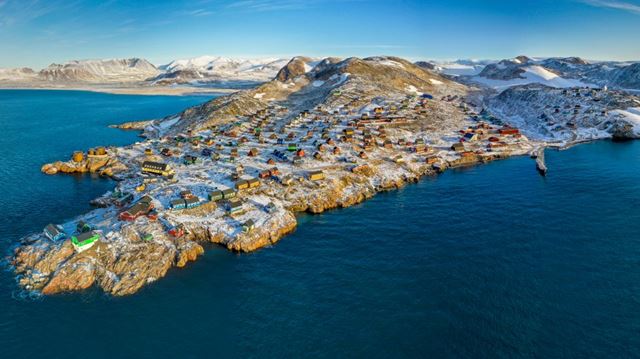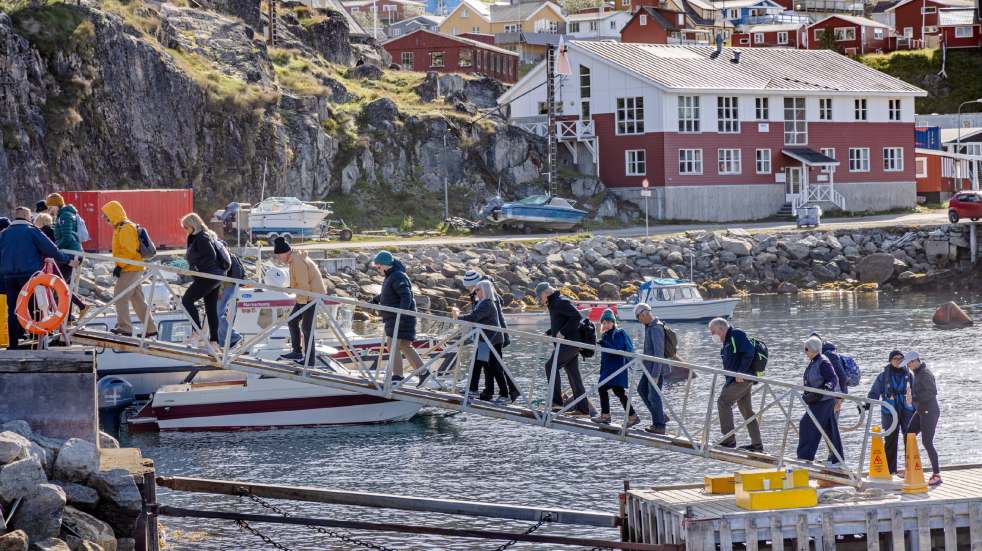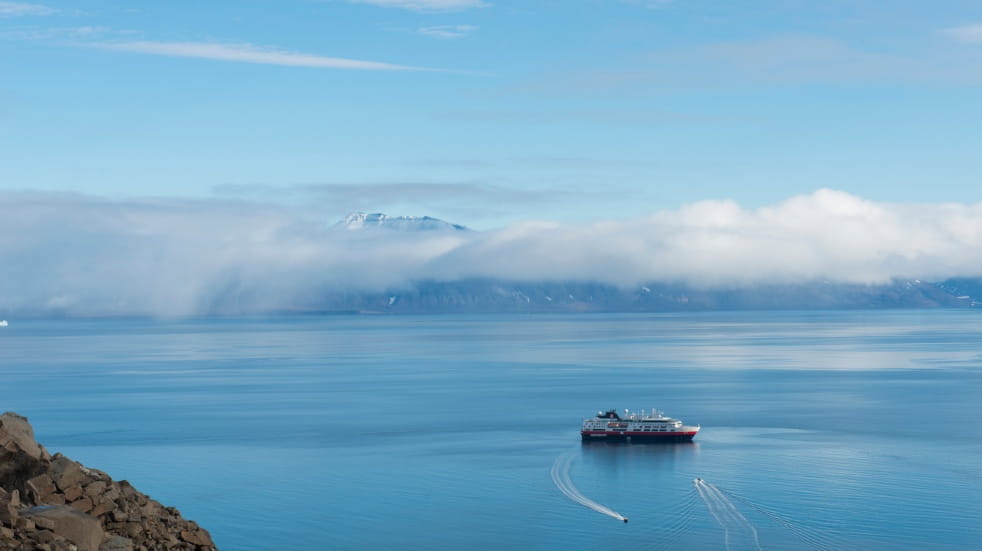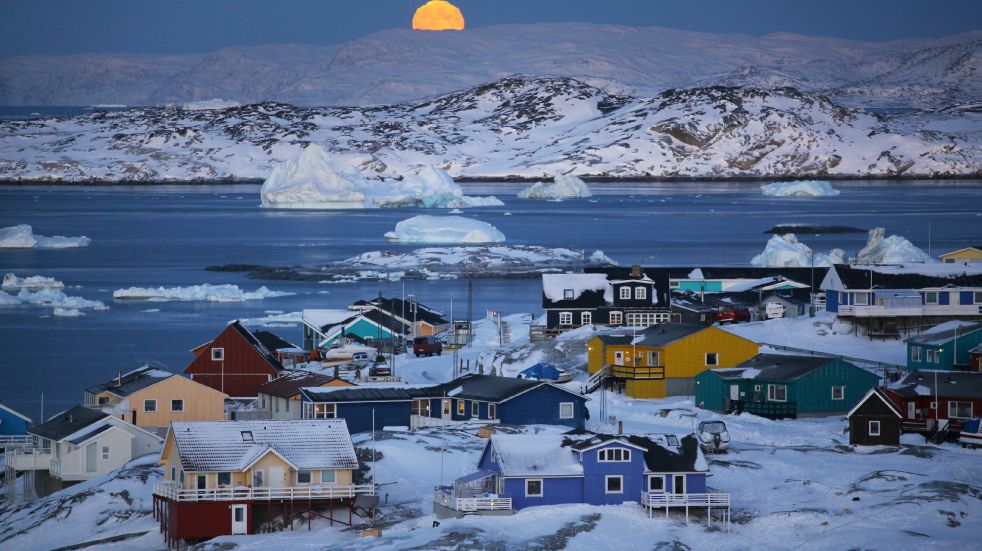
Greenland’s icebergs, Inuit culture and polar wildlife might look and feel remote but, with the opening of a new airport, a trip to this vast Arctic island just got so much easier says travel writer Joanna Booth
Greenland is not your average holiday destination. The world’s largest non-continental island is a land of mountains, fjords and glaciers, where nature is vast and beautiful but not to be trifled with, and where local Inuit communities simultaneously embrace the modern world but still honour traditions and skills that have sustained them for thousands of years.
Summer holidays here involve boat trips among icebergs, hiking through pristine wilderness, spotting wildlife from whales to musk ox, and experiencing the distinctive local culture. In winter, husky-sledding, snowshoeing and ice fishing are all on offer.

With any luck you'll spot an incredible array wildlife, including whales/Credit: Getty Images
It may be an unusual destination, but Greenland is becoming an increasingly accessible one. A totally revamped airport opened in the capital, Nuuk, at the end of last year with a new terminal building and a longer runway.
This allows traditional wide-bodied aircraft to land as well as smaller, less reliable propeller planes, thus opening up the possibility for more direct flights from both wider Europe and the USA. Two similar airport expansions in the south and west of the country are scheduled for 2026.
Expedition cruise companies are increasing numbers of voyages along the island’s coasts, both sailing from the UK or Iceland and, as a result of the increased airlift, taking round-trips directly from Nuuk. And as the travel industry meets the twin challenges of climate change (with classic Mediterranean destinations scorching in the summer) and over-tourism, with locals protesting about crowds in having hotspots, this off-the-beaten-track Arctic islands was already shaping up to be one of 2025's coolest holiday choices – even before Donald Trump expressed a desire to buy the whole place…
How to travel around Greenland

Boat is the most popular mode of travel in Greenland/Credit: Getty Images
This huge island, more than 10 times the size of the UK, is home to just 90 miles of roads. These are all localised – you can drive around a town, but to reach the next settlement you need to take to the sea or the air. Greenlanders are more likely to own a boat than a car, and for longer distances there’s Air Greenland’s network of internal flights on small propeller planes and helicopters.
These factors make independent travel around Greenland possible but somewhat complex, so you’ll want to involve a specialist tour operator such as Greenland Travel to handle the details.
When is the best time of year to visit Greenland
Visit in the winter season and you’ll find many of the activities we traditionally associate with Lapland holidays – snowmobiling, husky sledding and searches for the Northern Lights. Experiences in Ilulissat and Sisimiut – Greenland’s winter hubs – will feel more raw, authentic and remote than in the more easily accessible Arctic areas of Scandinavia and Iceland.
Summer is high season, particularly for travellers from the UK, and during these months you’ll find a simpler yet more in-depth method of exploring wide tracts of Greenland than by multiple flights – an expedition cruise. I sail with Hurtigruten Expeditions (HX), a Norwegian cruise line that offers a wide programme of sailings, mainly on board the 530-passenger Fridtjof Nansen – a sustainable, hybrid-powered ship with sleek, Scandi-style good looks and state-of-the-art technology.

Writer Joanna Booth travelled with Hurtigruten Expeditions/Credit: Getty Images
Another major bonus is the ship’s expedition team – a band of knowledgeable scientists and naturalists whose expertise brings me a deeper understanding of the destination. HX’s prices include flights, accommodation, meals, drinks and activities, so you can budget for your trip in advance.
Cruise lines split Greenland in two for their sailings – pairing the remote east coast with the Norwegian Arctic archipelago of Svalbard, or focusing, as I am, on the west coast, where the vast majority of Greenland’s tiny population of just 57,000 make their homes. I find that travelling by ship allows me not only to visit multiple settlements, but also to see vast wilderness areas inaccessible by land.
Marvel at the natural landscape of Greenland
.jpg)
You might find icebergs blocking your route/Credit: Getty Images
The icebergs blocking the route of my boat are the main attraction in Ilulissat, the west coast town that hosts a large proportion of Greenland’s 100,000 visitors per year. Sitting at the mouth of the Icefjord, it’s the closest settlement to Sermeq Kujalleq – one of the world’s fastest moving and most active glaciers. It produces around 10% of all Greenland icebergs, and around 35 billion tonnes of icebergs calve off and pass out of the fjord every year.
Back under the curving wooden roof of the Icefjord Centre I learn about the Greenland Ice Sheet, which covers 80% of the island’s landmass – most of the interior – and in places is nearly two miles thick. Glaciers abound, with around 200 of them reaching the sea and calving icebergs into the ocean. Despite its verdant-sounding name, Greenland is the best place in the northern hemisphere to see icebergs, and is why this fjord was designated a Unesco World Heritage Site.

See a glimpse of traditional and modern life/Credit: Getty Images
A short boat ride from Ilulissat, just 50 people live in this diminutive village perched on the shore of Disko Bay, and there’s just one hotel. Ilimanaq Lodge’s 15 modern A-frame cottages with fully glazed walls overlook the water on the edge of town, and stays here are offered through HX as a pre- or post-cruise add-on.
Greenland is a society poised on the edge of change, with the new airports sure to herald a rise in tourist numbers. But as settlements like Ilimanaq show, embracing the island’s future needn’t mean forgetting the past, and a trip to Greenland will give you a fascinating glimpse into both.
Your expert
Freelance writer Joanna Booth has spent the last 20 years travelling on all seven continents in search of big adventures, and then writing about them for varied national papers and glossy magazines.
Save on your next holiday with Boundless
Save up to 10% on worldwide adventures
Barrhead Travel’s team of destination experts can help you plan your dream getaway. To claim your discount just call 0330 094 0449, quoting ‘Boundless’. boundless.co.uk/barrhead
Save 14.5% on LV=Travel Insurance
When you’re booking your next holiday, buy your LV= travel insurance online and you’ll save a total of 14.5%, including your Boundless member discount. boundless.co.uk/lvtravel
Already a Boundless member? Simply log in to gain full access to all the offers and benefits included in your membership.
Not yet a member? If you're working in or retired from the public sector or civil service, Boundless has two great membership options to choose from: Boundless and Boundless Plus. Enjoy unlimited access or discounted entry to many of the UK’s top attractions, as well as year-round deals on restaurants, holidays, shopping and much more.
Do more with Boundless
If you're working in or retired from the public sector or civil service, Boundless has two great membership options to choose from: Boundless and Boundless Plus.
With Boundless, you get unlimited access or discounted entry to many of the UK’s top attractions, including Kew Gardens and Wakehurst and WWT centres across the UK, as well as year-round deals on restaurants, holidays, shopping and much more. With Boundless Plus, you can enjoy additional benefits including unlimited access to Historic Royal Palaces sites, National Trust for Scotland places, access to The Ramblers' extensive walking community, and peace of mind with roadside assistance and local recovery by LV= Britannia Rescue.





